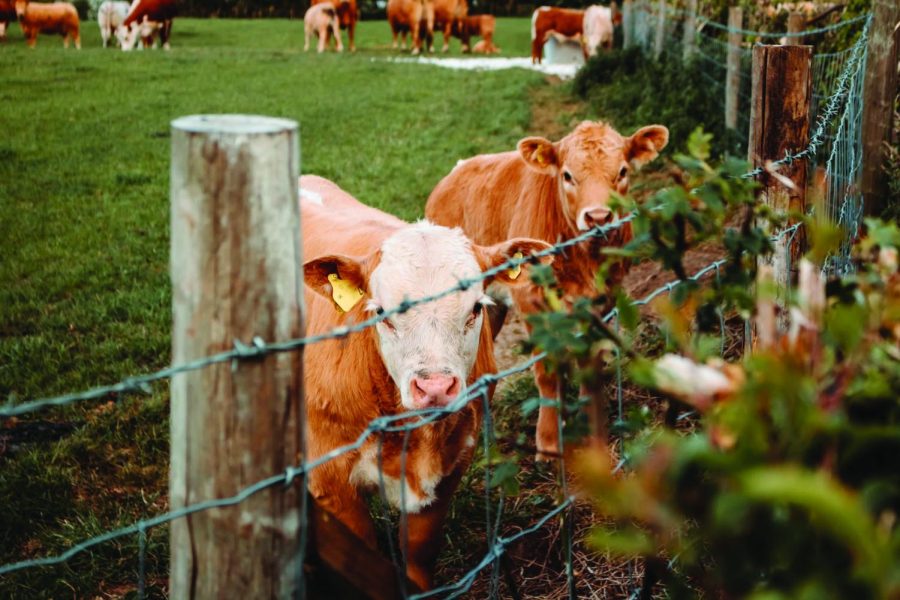Federal government to put $20 billion towards “climate-smart” funding
Photo courtesy of Unsplash/Nighthawk Shoots.
Two cows standing behind a fence at a dairy farm.
In recent years, the United States Department of Agriculture (USDA) has introduced an array of techniques to address the impact of climate change on our ecosystems, specifically looking to reduce the impact on farmland. These techniques, known as climate-smart agriculture (CSA), have become the cornerstone of the USDA’s efforts.
CSA is an approach used to help move agricultural food systems towards using more green and climate-resilient practices. Internationally, CSA helps nations meet both the United Nations sustainable development goals (SDGs) as well as the Paris Agreement. According to the Food and Agriculture Organization of the United Nations, techniques are determined to be CSA practices based upon context-specific elements, including local socioeconomic, environmental and climate change factors.
Over the summer, the Biden-Harris administration announced an investment of $22 billion into USDA programs that will implement this approach. This fund is the largest federal investment to date for climate-smart practices.
The funding completes a pledge made by President Joseph Biden in his first week of office to encourage such practices in the sector. This industry produces about 11 percent of greenhouse gas emissions across the nation.
A larger portion of the federal funding, about $19.5 billion, will go towards supporting existing agriculture programs that encourage climate-smart practices. The Department of Agriculture also announced that it would put an additional sum of about $2.8 billion towards researching and implementing climate-smart production on 20 to 25 million acres of farmland.
The smaller amount will go towards funding 70 selected projects under the first pool of the Partnerships for Climate-Smart Commodities funding opportunity. Projects for the second funding pool will be announced later in the year.
According to the USDA’s announcement of the Biden-Harris investment, their “anticipated investment will triple to more than $3 billion in pilots that will create market opportunities for American commodities produced using climate-smart production practices.”
Included in the initial 70 projects are a number of Connecticut-based initiatives, such as “Expanding Agroforestry Production & Markets,” which has an approximate funding ceiling of $60 million and “Scaling Methane Emissions Reductions and Soil Carbon Sequestration”, with an approximate funding ceiling of $45 million. Among the seven programs listed for Connecticut, the major agricultural commodities noted for each include everything from beef, dairy and livestock to nuts, berries, wheat, corn, soybeans, grass, timber and sorghum.
Among all 70 projects, there are 14 programs that have an approximate funding ceiling of $70 million to $95 million, 9 projects between $50 million and $65 million, 25 projects between $25 million to $45 million, and 22 projects between $5 million and $20 million.
“Farmers for Soil Health Climate-Smart Commodities Partnership” and the “Midwest Climate-Smart Commodity Program” are the two programs with the highest approximate funding ceiling, with both programs coming in at $95 million. Connecticut’s “Strengthening Grassroots Leadership & Capacity to Scale Climate-Smart Production Systems and Facilitate Historically Underserved Producers’ Access to Markets” has the largest for the state, with an approximate funding ceiling of $90 million.






